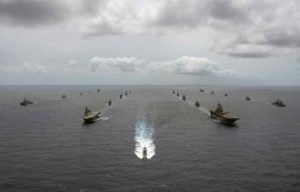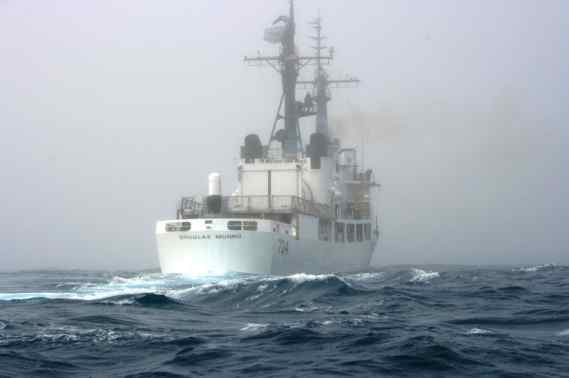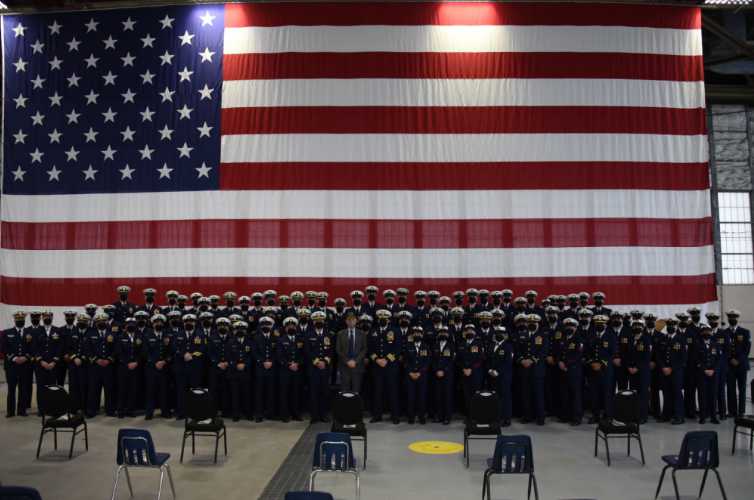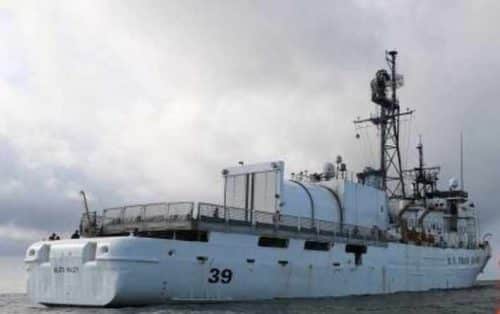
ALAMEDA, Calif. — The crew aboard the Coast Guard Cutter Munro (WMSL 755) returned home Monday to Alameda following a three month, 15,000 mile, multi-mission patrol.
Munro’s crew began their patrol in the Bering Sea and spent 37 days enforcing fisheries regulations from Alaska to the maritime boundary line separating U.S. and Russian waters.
Munro’s crew boarded 11 commercial fishing vessels to ensure compliance with U.S. fishery and safety regulations. In addition to patrolling the Aleutian Islands, Munro patrolled the maritime boundary line to prevent foreign fishing vessel incursions into U.S. waters. The cutter joined a Russian Border Guard vessel to conduct the joint border patrol to promote both countries’ economic security.
Following their Alaska Patrol, Munro represented the Coast Guard by participating in an at-sea-only iteration of the biennial Rim of the Pacific 2020 (RIMPAC) exercise Aug. 17-31, in the waters around the Hawaiian Islands.
RIMPAC encompassed ten nations, with a total of 22 ships, one submarine and multiple aircraft. Munro conducted formation steaming exercises, communications drills, maritime intercept operations and live-fire training alongside partner nations. Munro’s crew demonstrated their interoperability with the U.S. Navy promoting maritime governance in support of national defense. RIMPAC provided a unique training opportunity designed to foster and sustain cooperative relationships critical to ensuring the safety of sea lanes and security on the world’s interconnected oceans.
[content id=”79272″]
The at-sea-only construct for RIMPAC 2020 was developed to ensure the safety of all military forces participating and Hawaii’s population by minimizing shore-based contingents while striking a balance between combating future adversaries and the COVID-19 threat.
Munro’s patrol included the embarkation of a U.S. Navy MH-60S helicopter and aircrew from Helicopter Sea Combat Squadron 21, nicknamed the “Blackjacks” during RIMPAC.
Over two weeks, Munro and the Blackjacks conducted 380 flight evolutions, 55 touch and go landings, 34 vertical replenishment evolutions transferring cargo by helicopter, and multiple helicopter in flight refuels.
“This has been an extremely rewarding patrol,” said Munro’s Commanding Officer Capt. Blake Novak. “This was Munro’s first Alaska Patrol. It was an incredible opportunity to patrol as far north as the Arctic Circle to protect our borders and natural resources, and then transition to leveraging our DOD partnership with RIMPAC exercises. Conducting two distinctly different missions within the same deployment is what makes the Coast Guard unique and why I chose this service. COVID has been a challenge, but we met that challenge by establishing processes to maintain readiness and operate safely. Munro’s success is attributed to the young women and men that make up our diverse crew. While we have enjoyed our time at sea, and are proud of our accomplishments, we are excited to return home to our loved ones.”
To ensure the safety of Munro’s crew deploying during the COVID-19 global pandemic, the crew conducted pre-deployment COVID-19 testing, followed by a 14-day monitoring period. Throughout their patrol, Munro’s crew maintained strict health precautions during all interactions with the public, including wearing N95 respirators at all times and undergoing intensive decontamination procedures following the completion of each boarding.
Commissioned in 2017, Munro is the Coast Guard’s sixth 418-foot Legend-class national security cutter and one of four homeported in Alameda. National security cutters have a crew of more than 150 and are among the largest and most technologically sophisticated vessels in the Coast Guard’s fleet. The cutters can operate globally in the most demanding open ocean environments, from the North Pacific’s hazardous fishing grounds to the Eastern Pacific’s vast approaches, where its crews battle transnational crime.
-USCG-








